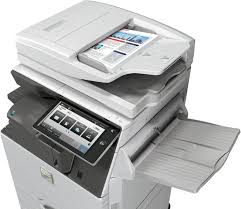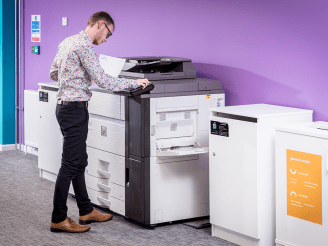In the age of digital learning, one might think that the need for printers for schools has diminished. But any educator will attest to the opposite. From handouts and tests to colorful projects and displays, printers for schools remain an integral tool in the educational setting. Given the vast array of options on the market, selecting the perfect printer for a school can be daunting. This guide aims to simplify that choice.
1. Why Schools Still Need Good Printers
Despite the increasing integration of technology into classrooms, tangible, printed materials offer numerous benefits:
- Tactile Learning: Physical handouts can aid kinesthetic learners.
- Reliability: Unlike digital tools, printed materials don’t suffer from connectivity issues or software glitches.
- Versatility: From everyday documents to vibrant art projects, different tasks require different printing solutions.
2. Key Considerations When Choosing a School Printer
- Volume: Schools typically require high-volume printing. Printers need to handle bulk tasks without constant paper refills or frequent toner replacements.
- Speed: Time is always of the essence in educational environments. A fast printing speed ensures tasks get done promptly.
- Budget: Schools often operate on limited budgets. The initial cost, as well as long-term expenses like ink or toner and maintenance, should be considered.
- Functionality: Multi-function printers that can scan, copy, and even fax can be particularly useful.
- Connectivity: In the age of smartphones and tablets, printers that offer wireless printing or connectivity with multiple devices can be a boon.
3. Popular Types of Printers for Schools
- Laser Printers: Ideal for high-volume printing, they’re fast and have a lower cost-per-page compared to inkjets.
- Inkjet Printers: Great for color printing. They’re versatile and can handle anything from documents to photos.
- All-in-One Printers: These combine printing, scanning, and copying in one device, offering excellent value for money.
- Wide-Format Printers: Perfect for art departments or for creating large displays.
4. Ink Costs and Eco-friendliness
- Ink/Toner Costs: Over time, ink and toner refills can become a significant expense. Opting for printers that offer high-yield cartridges can result in long-term savings.
- Eco-friendly Options: Schools can set a positive example by choosing printers with energy-saving features, or those that work efficiently with recycled paper.
5. Maintenance and Durability
Given the heavy usage in schools, printers should be durable and require minimal maintenance. Brands with solid warranties or those known for longevity should be prioritized.
6. Additional Features to Consider
- Duplex Printing: Automatic two-sided printing can save on paper costs.
- Security Features: Some printers offer security measures to ensure sensitive documents aren’t easily accessed.
- Color vs. Monochrome: While color printers are versatile, monochrome printers might suffice for schools primarily printing text-based documents.
Factors to Consider
1. Print Volume and Speed
- Laser Printers: These are ideal for high-volume printing, offering fast print speeds and lower cost per page.
- Inkjet Printers: Inkjet printers are suitable for lower print volumes and can handle colour printing well.
2. Printer Type
- Multifunction Printers (MFPs): MFPs combine printing, scanning, copying, and sometimes faxing capabilities in one device, making them versatile for school offices.
- Single-Function Printers: These are dedicated printers that only perform printing tasks, suitable for classrooms or smaller offices.
3. Connectivity
- Ensure printers have USB and network connectivity options to facilitate printing from computers and mobile devices.
4. Security Features
- In educational institutions, data security is crucial. Look for printers with robust security features like user authentication and encryption.
5. Cost per Page
- Calculate the ongoing cost of consumables (toner or ink) to determine the cost-effectiveness of the printer.
6. Durability and Reliability
- Schools require durable printers that can handle frequent use. Look for models with a good track record for reliability.
7. Size and Space
- Consider the available space in classrooms or offices when selecting printer sizes.
8. Environmental Impact
- Choose printers with energy-saving features and look for eco-friendly certifications like ENERGY STAR.
9. Mobile Printing
- Mobile printing capabilities can enhance convenience for students and staff who need to print from smartphones or tablets.
10. Service and Support
- Ensure the manufacturer or supplier provides reliable customer support and maintenance services.
What are Managed Print Services?
Managed Print Services refers to the complete outsourcing of a business’s print environment to a third-party provider. Instead of juggling multiple vendors, supplies, and maintenance tasks, companies partner with an MPS provider to handle everything related to printing – from hardware and supplies to service and support.
Key Components of MPS:
- Assessment: MPS begins with an in-depth analysis of a company’s current print environment. This includes identifying the number of printers, their locations, usage patterns, and overall costs.
- Optimization: Based on the assessment, the MPS provider will suggest an optimized print fleet, often reducing the number of devices and ensuring they’re strategically located.
- Maintenance & Support: MPS providers handle all maintenance, from routine servicing to repairs, ensuring minimal downtime.
- Supply Management: Never run out of ink or toner again! MPS providers monitor supply levels and automatically replenish them as needed.
- Reporting & Monitoring: Using advanced software, MPS providers can monitor usage patterns, providing regular reports that offer insights into print behaviors and costs.
- Environmental & Sustainability Solutions: Many MPS providers offer eco-friendly solutions, from energy-saving devices to recycling programs.
Benefits of Managed Print Services:
- Cost Savings: One of the primary draws of MPS is the potential for significant cost savings. By optimizing the print environment and reducing wastage, businesses can save up to 30% on printing costs.
- Enhanced Productivity: With regular maintenance and automatic supply replenishment, businesses experience fewer printer-related disruptions.
- Security: MPS solutions often include enhanced security features, ensuring confidential documents remain protected.
- Sustainability: By optimizing print behaviors, using eco-friendly devices, and recycling, businesses can reduce their carbon footprint.
- Simplified Billing: Instead of juggling multiple invoices for supplies, maintenance, and equipment, companies receive a single, consolidated bill.
- Scalability: As a business grows, an MPS provider can easily adjust the print environment to match evolving needs.
Colour Printing
Colour printing has transformed the way we communicate, educate, and entertain in the UK. Its visual impact, versatility, and ability to enhance communication are undeniable. As technology continues to advance, the UK’s reliance on colour printing will persist, with a growing emphasis on sustainability and accessibility to ensure that the benefits of this medium are enjoyed by all.
How Does Modern Colour Printing Work?
Modern colour printers, especially inkjet and laser printers, primarily use the CMYK colour model:
- Inkjet Printers: These use tiny nozzles to spray droplets of ink onto a page. Advanced inkjet printers can mix primary colours in precise ways to reproduce a wide array of colours.
- Laser Printers: Using a combination of electrical charges, lasers, and toner (fine powder), laser printers produce high-resolution colour images. The printer uses static electricity to transfer toner in patterns, which is then melted onto the paper.
Key Features of Print Management Software
Print management software offers a range of features tailored to meet the needs of businesses in the UK:
1. Print Monitoring
- Real-time monitoring of print jobs, helping to track usage and identify opportunities for cost reduction.
2. User Authentication
- Secure printing through user authentication methods like PIN codes or proximity cards.
3. Mobile Printing
- Support for mobile printing, allowing users to print from smartphones and tablets.
4. Print Queues
- Management of print queues to prioritise print jobs and reduce bottlenecks.
5. Reporting and Analytics
- Generation of detailed reports on printing activities, aiding in cost analysis and budgeting.
6. Rules-Based Printing
- Implementation of printing rules and policies to promote responsible and cost-effective printing practices.
Print Management Software Providers
Several print management software providers offer solutions tailored to the needs of businesses in the UK:
- PaperCut: A widely used print management software with features for cost control, user authentication, and environmental sustainability.
- Equitrac: Offers print management and cost recovery solutions designed to enhance productivity and reduce expenses.
- Pharos Systems: Provides print management solutions that include secure printing, mobile printing, and reporting tools.
The Education Sector: A Deep Dive into the Pillar of Knowledge and Growth
Education is universally acknowledged as a cornerstone of personal development and societal progress. It shapes minds, influences cultures, and lays the groundwork for future innovations and discoveries. The education sector, comprising various elements from primary schooling to higher education and lifelong learning, plays a pivotal role in nurturing talent and driving economic growth.
Printing Requirements
Whether it’s for a personal project, a business need, or an educational task, understanding your printing requirements is crucial for achieving the desired output. The world of printing offers a vast array of options, and a little knowledge can go a long way in ensuring your print job is a success.
Choosing the right printer for a school is about understanding the institution’s unique needs and balancing them against budget constraints. Whether it’s a compact inkjet for occasional projects or a fleet of high-speed laser printers for daily tasks, the right choice can streamline operations, foster creativity, and enhance the learning experience. Happy printing!



Recent Comments